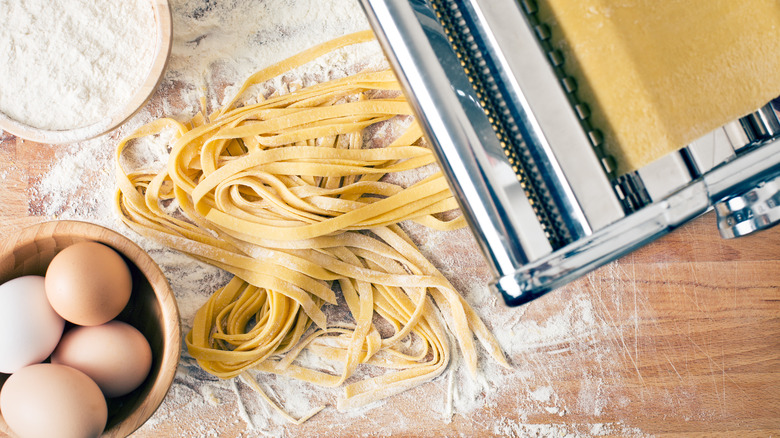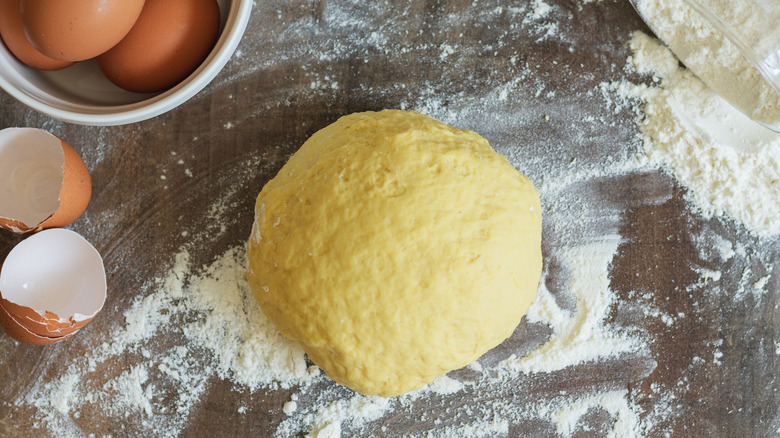The Step You Can't Forget Before Rolling Fresh Pasta Dough
Spaghetti spun onto a fork and dripping with parmesan and olive oil is about as good as dinner can get. Pasta dishes in and of themselves are perfect for people needing a simple, yet effective extra boost of carbs throughout their day. Whether you're the kind of pasta lover who prefers cheese-filled lasagna bolognese, or rice-like orzo in their avgolemono soup, pasta is perfect for any dinner-time meal. But, while it's all too easy to stop by the grocery store on the way home to grab a box of pre-made stuff, making homemade pasta is surprisingly easy and also incredibly rewarding.
You see, when you whip up pasta, you are recreating a very old recipe. Delallo claims that the history of pasta stretches back over 3,500 years throughout Asia, Africa, and, of course, Europe. Italy is possibly the country best known, not only for its pasta-making skills but also for its obsession with the food. According to Statista, 81% of Italians eat pasta daily! Making your own pasta at home is a wonderful way to have fun in the kitchen, and maybe you're already well versed in making your own ravioli and angel hair pasta, but whether this is your first time making your own pasta or your 100th time, there is one important step you need to remember before rolling out the dough.
Let the dough rest
According to The Extraordinary Italian Taste, pasta is traditionally made using a blend of wheat flour, water, and eggs which is then rolled out and cut into various shapes to be boiled fresh. It is probably one of the easiest bread goods you can make. The Clever Carrot says that pasta is traditionally created by hand. Flour is placed on a clean flat counter, and eggs are slowly whisked into the wheat. Eventually, the two are fully kneaded together, and water and oil are added to the mix for some additional moisture. Most recipes will have you roll out the dough immediately and have you get to work shaping it, but you must never do this right away.
Eataly explains that pasta dough must always go through a period of rest directly after being kneaded. The site recommends sealing the dough in plastic wrap and leaving it to rest for at least thirty minutes at room temperature, or in the refrigerator overnight. Delicious Magazine says that letting your dough rest is imperative to the pasta-making process because it lets the water and flour in the mix fuse together fully, allowing the gluten structure to become stronger. It's also important to note that the more egg yolks used in the pasta recipe, the more time you should let the pasta rest before rolling out, which could be anywhere from six hours to overnight in the fridge.

